Technical rangers
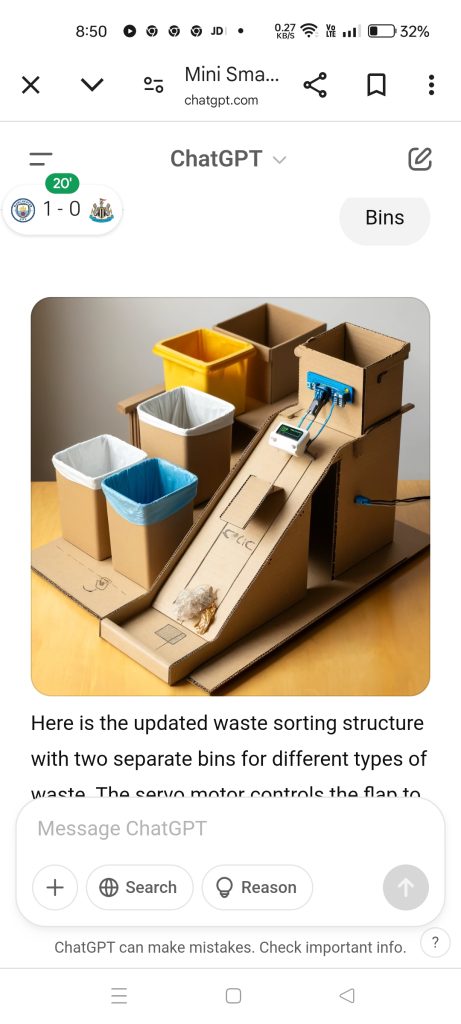
A functioning waste sorter robot that practises while being low-cost and educational.
The mini smart waste sorter is a compact, efficient device designed to automate the sorting of household waste into recyclable and non recyclable categories. Using sensors ,artificial intelligence and user friendly interface it ensures accurate waste segregation ,reduces contamination and promotes eco-friendly habits within the household.
Benefits:
Increased Efficiency: Automates the sorting process, saving time and effort compared to manual waste separation.
Improved Recycling: Ensures accurate waste categorization, increasing the rate of recycling and reducing contamination in recycling streams.
Space-Saving: Its compact size makes it ideal for small homes or apartments without sacrificing functionality.
Cost-Effective: Reduces the need for additional labor or waste management services and helps lower disposal fees.
Eco-Friendly Impact: Encourages sustainable living by improving waste management practices, reducing landfill waste, and supporting the recycling economy.
User-Friendly: Simple interface with smart connectivity features, such as notifications and reminders for optimal usage, making it easy for anyone to use.
Educational Tool: Promotes awareness about waste sorting and recycling, fostering more sustainable habits in users.
Green Growth
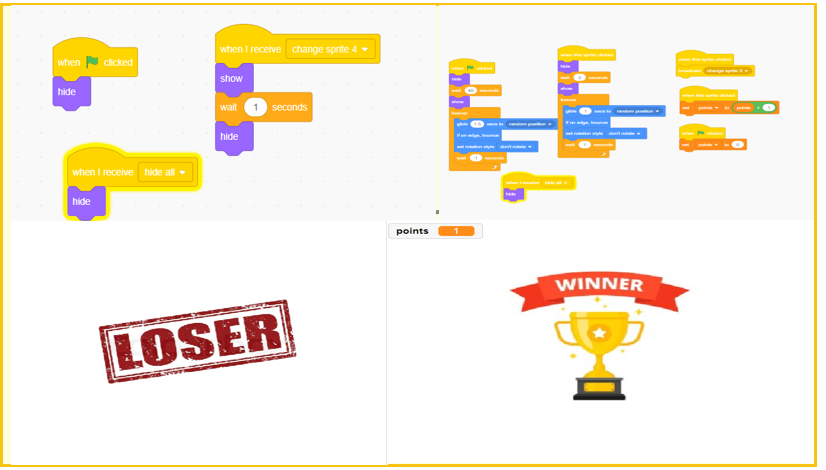
We tried coding in a small skit, a game, and some dialogues in it. It is based on environmental pollution and degradation and corrosion.
Smart Plant Watering System
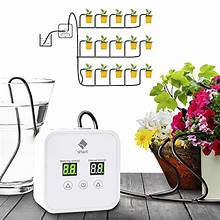
A large-scale smart plant watering system is designed to optimize plant care through automation, technology, and data-driven decision-making. It utilizes soil moisture sensors distributed across the growing area to monitor moisture levels in real-time, ensuring plants receive precise watering. The system integrates with local weather data, adjusting watering schedules based on rainfall and weather forecasts. Automated irrigation methods, such as drip systems or sprinklers, activate only when needed, conserving water and reducing waste. Users can remotely manage and monitor the system through smartphone apps or web platforms, which provide real-time updates, notifications, and control over watering schedules. Water flow efficiency is further enhanced through nutrient delivery, where water is enriched with fertilizers for plant health. With the ability to log data and use AI, these systems continuously optimize watering schedules, improving efficiency and plant growth while minimizing resource consumption. They are ideal for commercial farms, greenhouses, or large residential gardens.
Air Quality Monitor
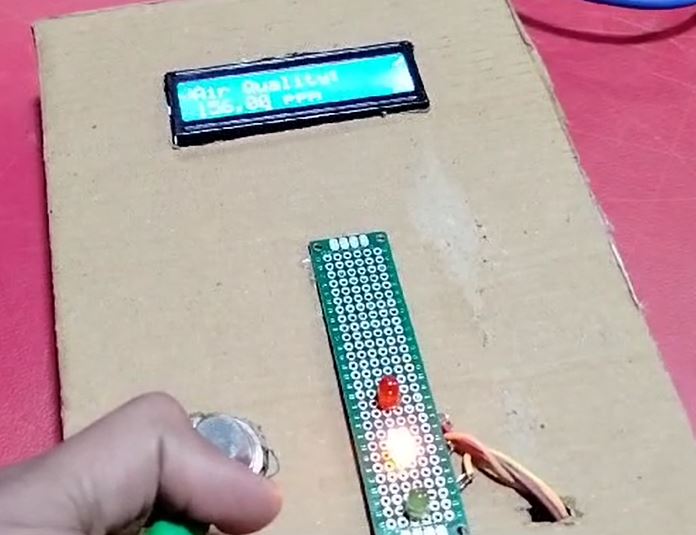
Air Quality Monitoring problem statement due to the growing concern over air pollution and its adverse effects on human health and the environment. Rapid industrialization, increasing vehicular emissions, and deforestation have led to deteriorating air quality, causing respiratory diseases, cardiovascular problems, and environmental degradation. Traditional monitoring systems are expensive, centralized, and inaccessible to many communities, limiting real-time awareness and preventive actions. To address this, we propose a cost-effective, portable, and real-time air quality monitoring system using IoT sensors, cloud computing, and AI-driven analytics. This system will track key pollutants, provide real-time data through mobile and web dashboards, and generate smart alerts for hazardous conditions. By leveraging technology, predictive analytics, and community engagement, our solution empowers individuals and policymakers to make informed decisions for a healthier environment. This project is crucial in driving awareness, enforcing regulations, and ultimately improving air quality and public health
Eco Sense

Ecosens360 is an AI-powered project that monitors air quality in real-time. It provides instant alerts when pollution levels rise, helping to create a healthier environment.
While working on the project, I encountered challenges with coding commands and adjusting data. I also faced difficulties adding graphics and images. However, with persistence, I was able to overcome these issues and successfully complete the project.
Gas Leak Detector
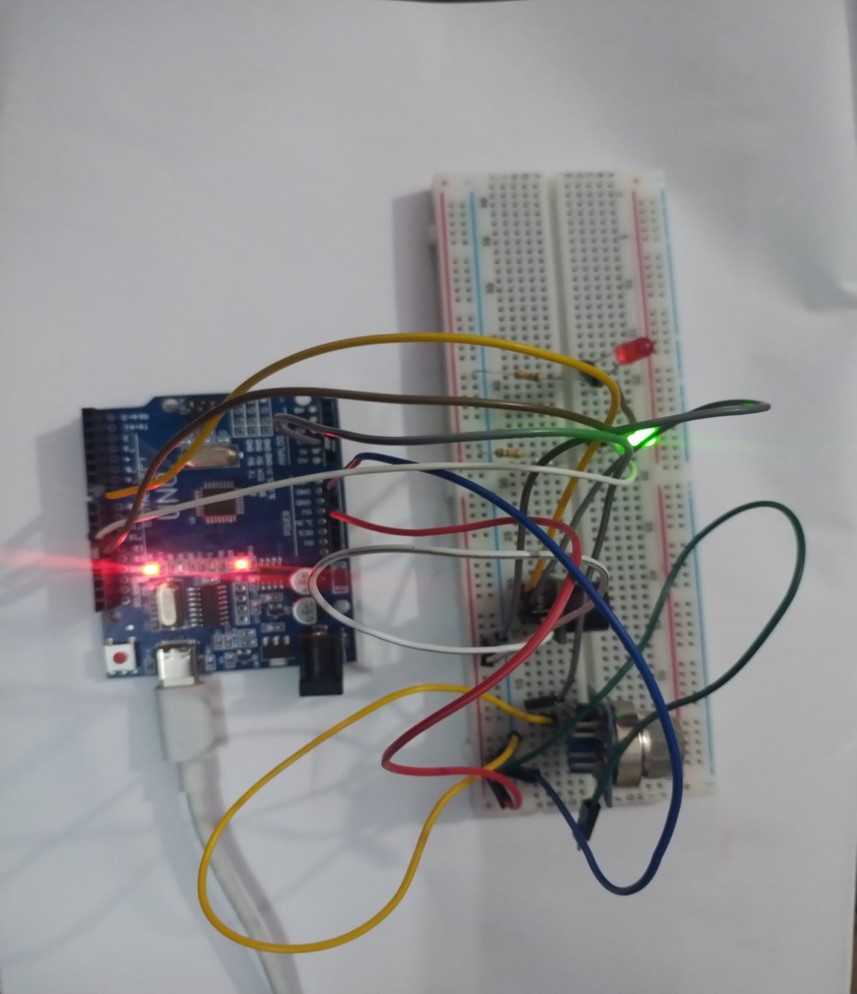
This project aims to design a (gas leak detector) using Arduino, capable of detecting flammable gases such as methane or propane and alerting users through visual and sound signals. The system relies on a gas sensor (MQ-2 or MQ-5), which detects gas presence in the air and sends data to the Arduino board for processing.
When a gas leak is detected, the system activates a light indicator (LED) to visually alert the user, along with a buzzer to provide an audible warning. Additionally, the project can be upgraded to send notifications to a smartphone, making it suitable for both home and industrial applications.
The project consists of essential components, including a gas sensor, Arduino board, wires, sound alarm unit, LED indicator, and a protection module to ensure circuit stability. It is programmed using (Pictoblox), allowing easy modifications and enhancements, such as integrating smartphone control or IoT (Internet of Things) connectivity.
This gas leak detector is cost-effective and easy to install compared to commercial detectors. It is also flexible and customizable based on user needs. It can be used in homes, factories, and laboratories to ensure safety and prevent accidents caused by gas leaks.
Thanks to its simplicity and effectiveness, this project is an ideal choice for students and hobbyists interested in developing smart safety systems using modern technologies like Arduino and Pictoblox.
Air Quality Meter

Iraq faces severe air pollution and worsening dust storms due to climate change, desertification, and human activities. Major pollution sources include emissions from factories and old cars, waste burning, oil flaring, and war-related destruction. Dust storms are increasing due to desert expansion, reduced rainfall, rising temperatures, deforestation, and water shortages, leading to serious health risks such as asthma, lung infections, heart disease, and eye or skin irritation. Using an air quality meter, which includes the MQ-135 Gas Sensor and GP2Y1014AUF0F Dust Sensor, can help detect pollution levels and provide real-time data. The MQ-135 detects harmful gases like carbon dioxide, ammonia, sulfur dioxide, and nitrogen oxides, helping monitor pollution from factories, vehicles, and gas flaring. The GP2Y1014AUF0F measures dust concentration, particularly PM2.5 and PM10 particles, which cause respiratory issues, making it useful during dust storms. These sensors can be integrated into smart monitoring systems, air purifiers, or alert mechanisms to help people take protective measures. Possible solutions include using air quality meters to detect pollution and provide warnings, as well as wearing masks during dust storms for protection. By implementing air quality meters, Iraq can improve air conditions and safeguard public health People in poor areas can use them to warn them about air quality and dust storms, and the government can provide it to poor areas by placing it in health centers, for example, to alert patients.
GreenHorizon

GreenHorizon is a fascinating project that elaborates users for saving the environment 5 different ways using . The 5 diffrent ways are:-
Trash Game
Quiz Game
Why we need to save the earth ?
What can we do to save the Earth ?
Fun facts about the earth
Smart Temperature Detection
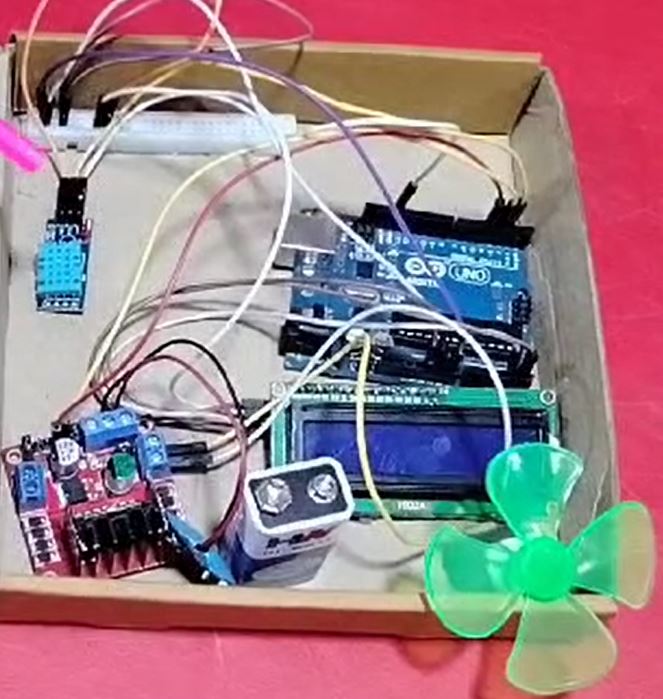
Smart temperature detection systems use advanced sensors and AI technology to monitor and regulate temperature in real-time. These systems are commonly used in various applications, such as smart homes, industrial settings, and healthcare, to ensure optimal conditions for both comfort and safety. Equipped with infrared sensors or thermocouples, they detect temperature changes and can send alerts when thresholds are exceeded. For example, in healthcare, they can monitor patients’ body temperature, while in smart homes, they optimize heating and cooling systems based on real-time data. These systems often integrate with mobile apps or cloud platforms, allowing users to track and control temperature remotely. In industrial environments, they can detect overheating in machinery, preventing potential failures. With the ability to learn patterns and adapt, smart temperature detection ensures energy efficiency, safety, and convenience by automatically adjusting settings or notifying users of abnormal conditions.
Solar Panel Manual Tracker
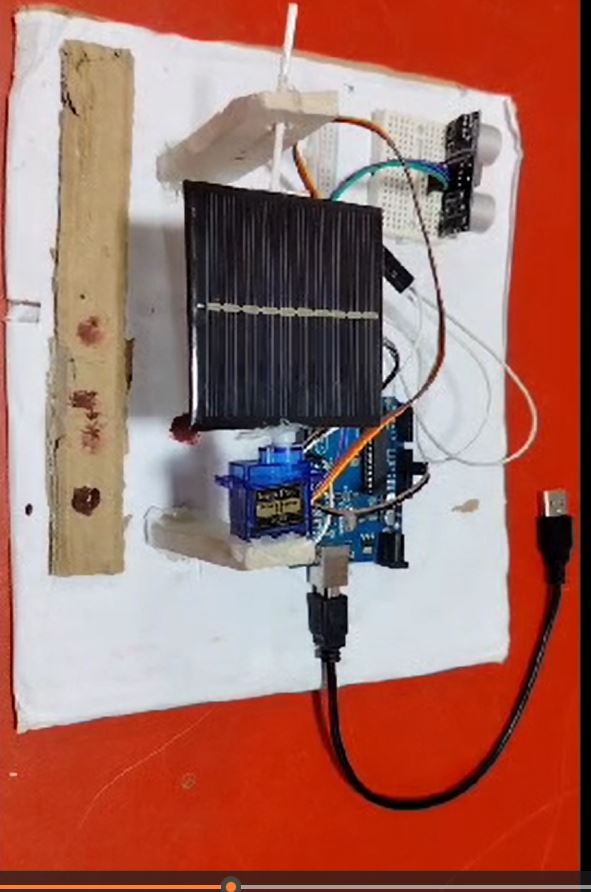
The Solar Panel Manual Tracker Project is designed to enhance the efficiency of solar energy systems by manually adjusting the angle of solar panels to track the sun’s movement. This project focuses on creating a low-cost, simple mechanism that allows users to change the orientation of solar panels throughout the day, maximizing solar exposure and energy production. The tracker consists of a frame that holds the panel, along with adjustable supports for elevation and azimuth angles. Users manually adjust the system at specific intervals (e.g., morning, afternoon) to ensure the panels are facing the sun as directly as possible. The project aims to demonstrate the benefits of solar tracking, which can increase the energy output of fixed-position solar panels by up to 30%. It is ideal for small-scale or off-grid solar installations where automated trackers might be cost-prohibitive.
